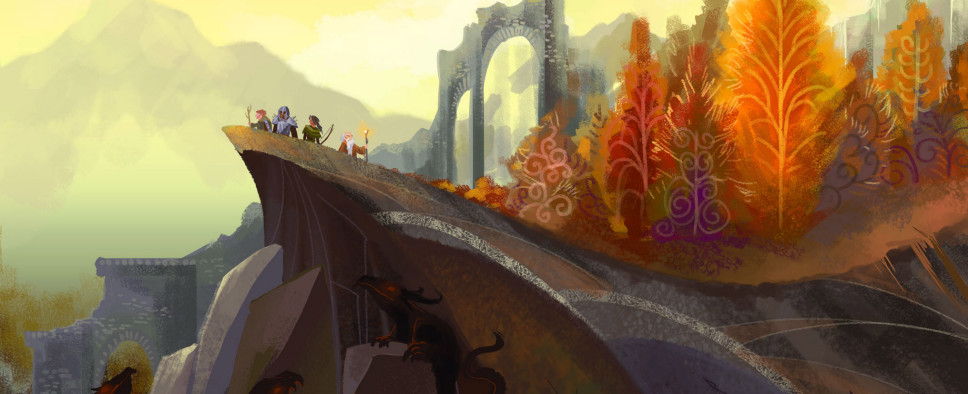Wildermyth Review - Page 3
-
Category: ReviewsHits: 17452

Article Index
In that case, you'll be mastering a turn-based system where each character has two main actions per turn that you use to move and attack, a single swift action for something like laying a trap or going into a special stance, and unlimited free actions for swapping between weapons and the like. During your turn, you can move your characters in any order you like, so there's no initiative, and, as a fairly annoying design choice, once you move your character a single square, it counts as an action, meaning your movement points aren't granular.
Upon leveling up, your characters will get to pick a new ability. Reinforcing the game's procedurally-generated nature, the choices you get are random. But you can reroll them by using Legacy Points that you get for completing encounters and undertaking optional tasks.
Thanks to this approach it's quite difficult to power-game and build an optimized party, but at the very least, all the options you get tend to be useful in some way (new interfusions, multiple attacks per turn, the overwatch maneuver). And the random element just makes things more memorable in the long run. It makes your characters feel imperfect but unique.
After you're done with an encounter, you also get some loot, and here, I feel, the developers may have dropped the ball. Sure, you have a decent number of weapon types with their own special uses, like axes being able to "shred" enemy armor, maces knocking your enemies back, and spears having increased attack range, but the actual weapons follow a linear tier progression and even the unique and elemental weapons you can find don't really offer that much in terms of variety. A minor bonus here, an extra effect on crit there, and that's about it. And armor gets even less love since it only has two tiers compared to the three tiers of weapons, and doesn't seem to have any unique variants.
When it comes to objectives, usually you're tasked with eliminating all enemies on the map. But from time to time, you'll get asked to reach a certain tile or defeat a boss. You'll also get bonus objectives on certain maps, and depending on your choices leading up to the fight, you'll get different starting bonuses or penalties.
The game has four difficulty levels and the option to decouple combat difficulty from the overall campaign difficulty, in effect allowing you to have challenging fights while, putting it into Pathfinder: Kingmaker terms, automating kingdom management.
Overall, if you know your turn-based games, the highest difficulty level offers a decent degree of challenge with some opportunities to mess up. However, due to the game's campaign structure where your characters can easily die and your recruiting opportunities are usually limited to a single rookie character per chapter, cranking things all the way up might not be the best idea if you're looking to have an organic experience without too much reloading (there's also an Iron Man mode if you can't trust yourself with a load button).
With that in mind, the second to last difficulty may be on the easier side, but it's still not a complete cakewalk and will allow you to have some tense moments without outright putting you into a long-term death spiral.
Now, connecting all of this is an overworld layer. And the best way I have to describe it is a very, and I mean very, pared-down version of Jagged Alliance.
Basically, you have a big world map separated into a number of regions. Initially, the "forces of good" control only a few of them, and it's up to you to scout the remaining areas, clear them out, establish defenses and production facilities, and finally, fulfill some big goal. This ends the chapter and advances the game's clock for about ten years.

